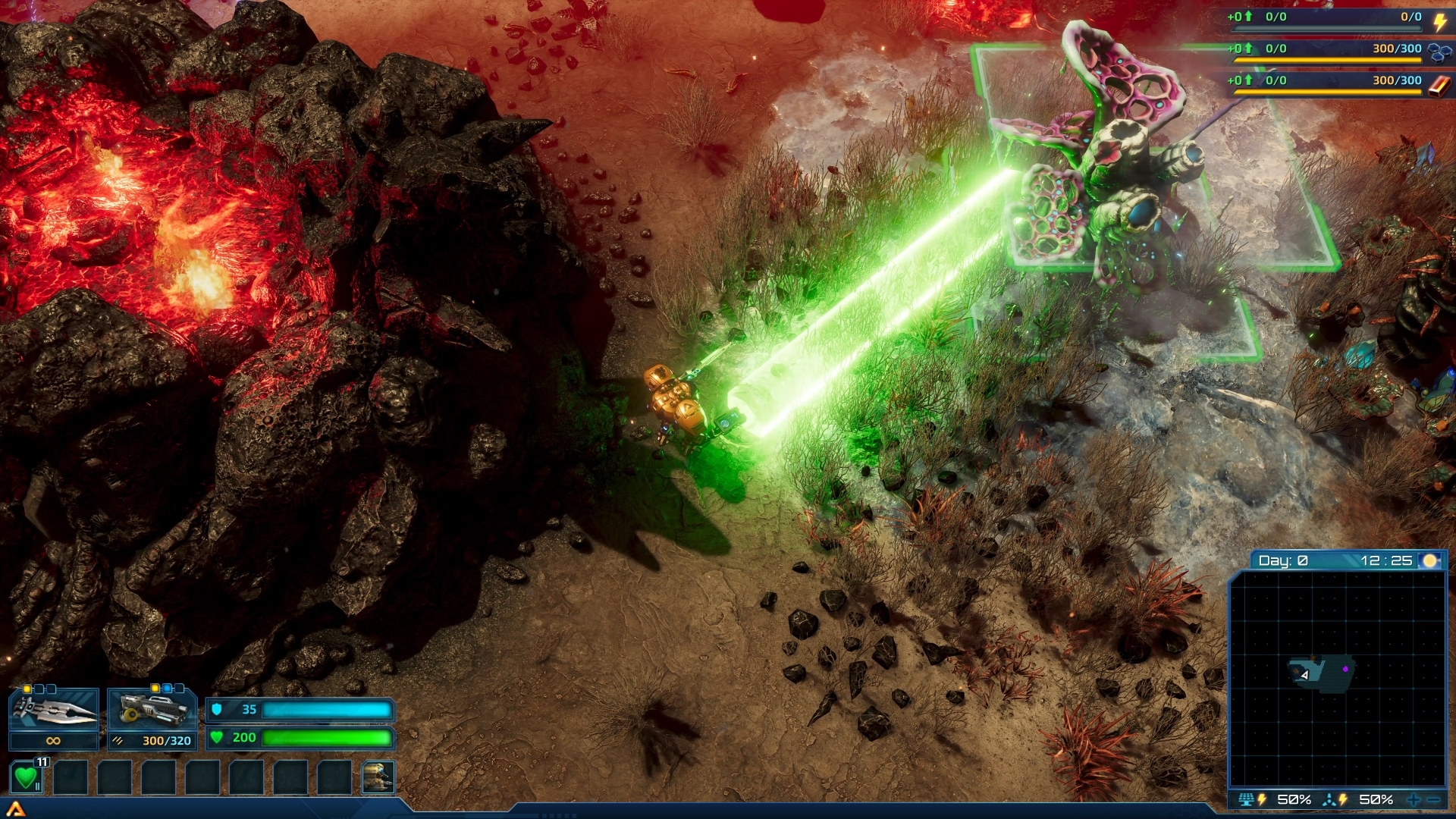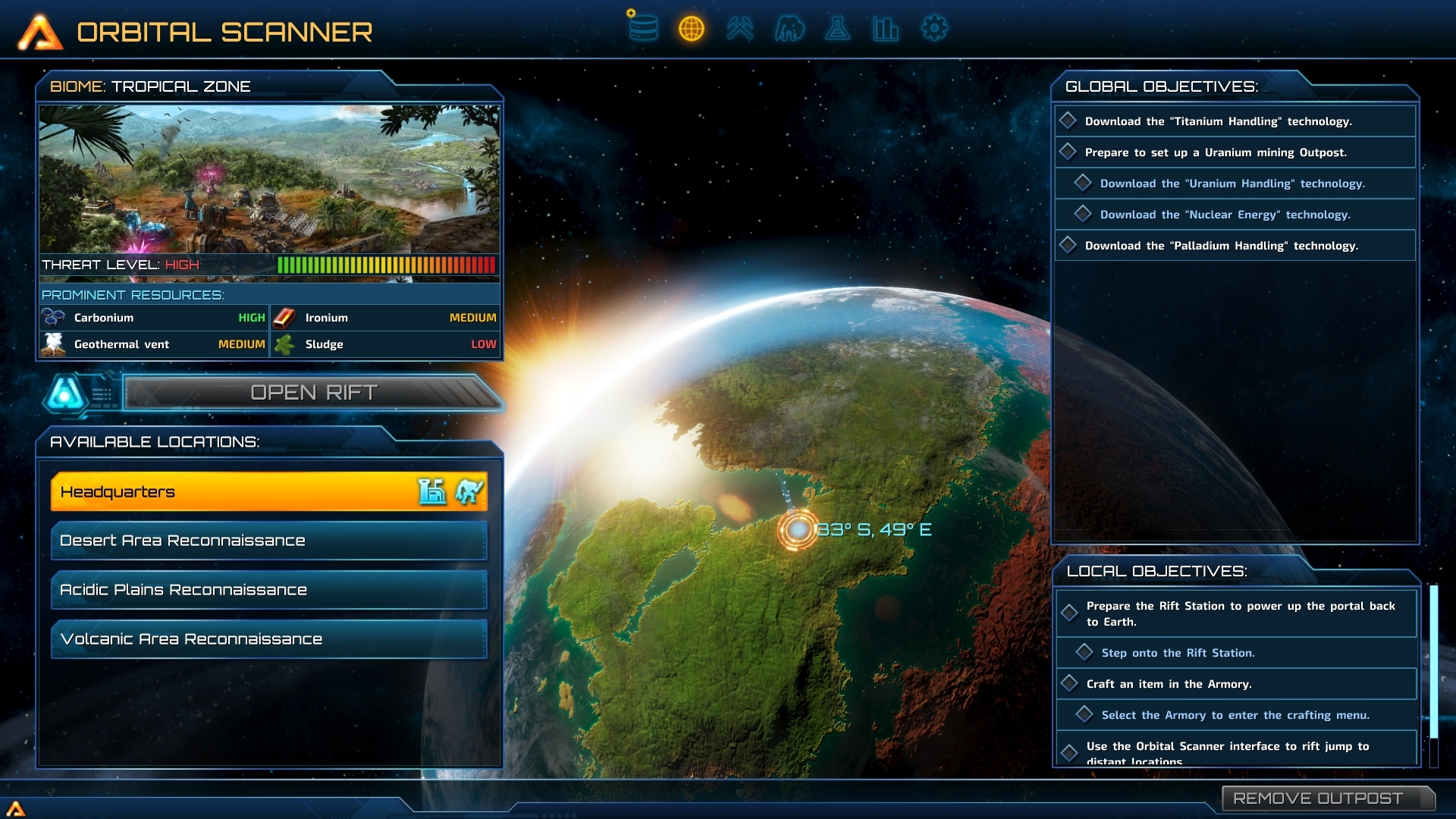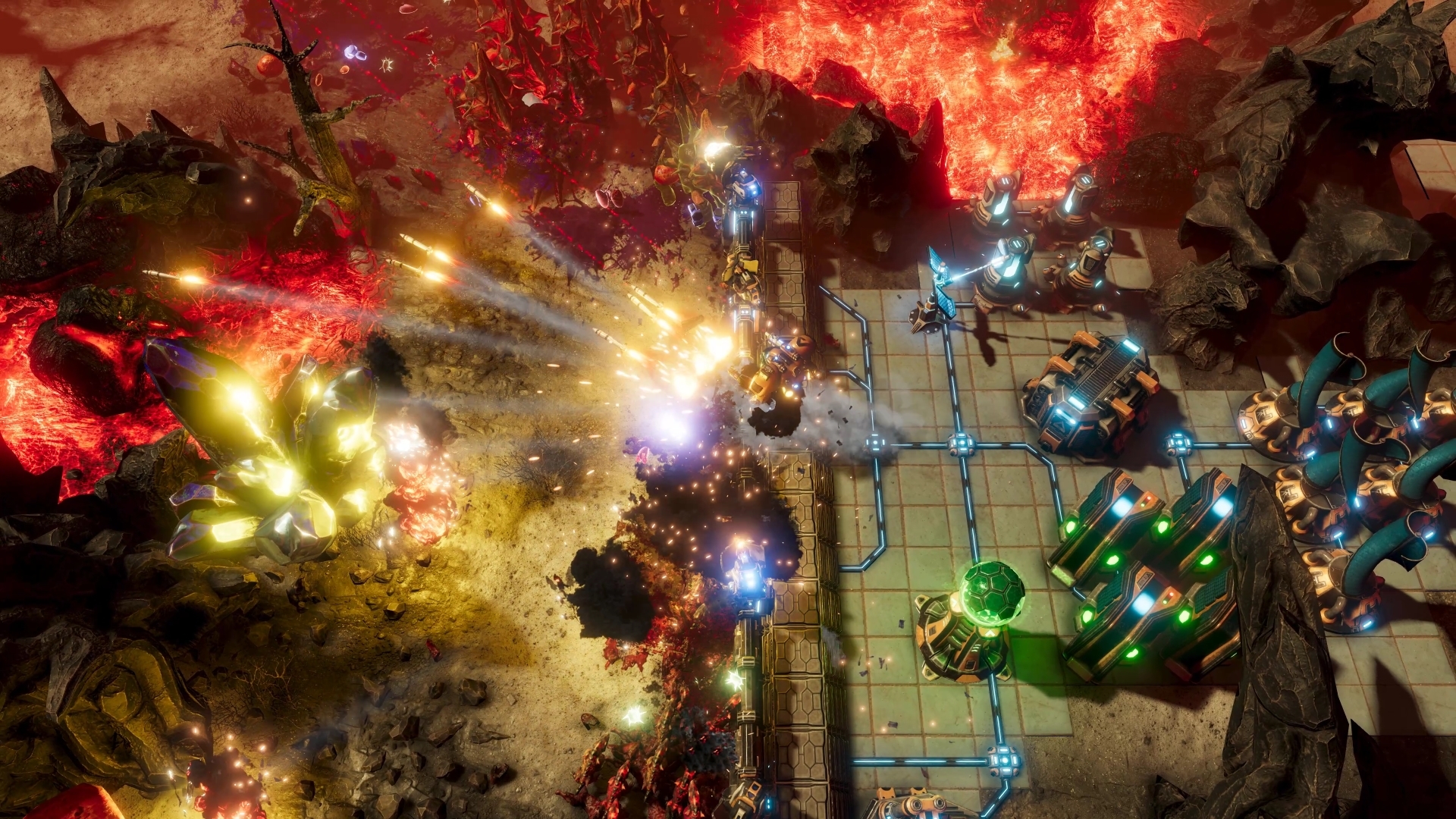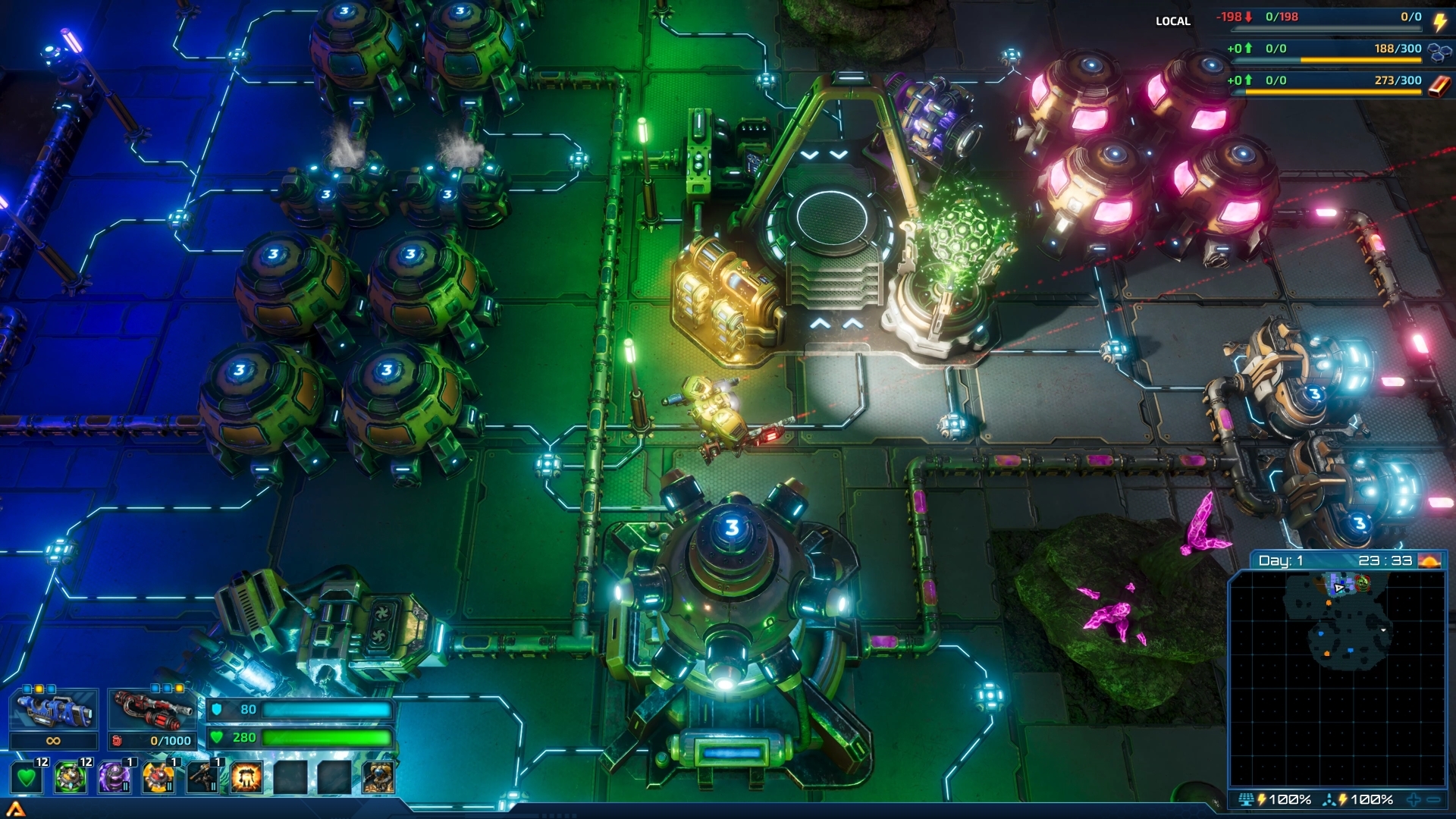Researching the Galatean ecosystem.
Hello Riftbreakers!
Last week we told you about one of the aspects of The Riftbreaker Campaign Mode - Planetary Exploration. During those events, you will make your first contact with the new biomes and take your first steps into familiarizing yourself with the conditions you will have to endure. Today, we will look at the more scientific part of Ashley’s work on Galatea - sampling and analyzing alien species and phenomena.

While exploring new biomes, plenty of things will catch Ashley’s attention. Among them, you will find new alien species, extraordinary crystal formations, as well as other never-seen-before anomalies. Ashley’s scientific spirit will desire to scan and categorize all of them, and she won’t be able to do that based on a single sample. Mr. Riggs can help find more material for scanning by adjusting his sensors to mark potentially scannable objects. He can also program the Orbital Scanner to look for higher concentrations of alien curiosities.

Ashley and Mr. Riggs have a range of tools at their disposal. Sometimes the object is small and simple enough that research samples of good quality can be acquired by using the Bioscanner. The Bioscanner is an extension module that Ashley can put in Mr. Riggs’ arm, much like a classic weapon. It scans the molecular structure of an object and constructs a digital image of the structural composition of the object. On that basis, it is possible to conduct a range of virtual tests, the same way that you would with a regular research sample, but without the need to collect it manually. Your research goes forward, and the environment is safe. Win-win!

Some things, however, are simply too large or too complex to scan using the regular Bioscanner. In those cases, you need to roll out the big guns (not literally). The Research Station is a full-sized building packed with state-of-the-art technology that will thoroughly scan all the Galatean curiosities you point it towards, as long as you keep it operational. You will have to use it to gather information about the most complex objects of interest. As you can imagine, it won’t be easy to protect delicate field equipment in the middle of an unknown place, but we’re sure you will find a way.
 'Camp cool' flagpoles not included in the game. You will have to mod them yourselves ;)
'Camp cool' flagpoles not included in the game. You will have to mod them yourselves ;)
Ashely researches Galatea 37 to better understand the threats she’s facing and take advantage of the opportunities she gets. If you study a creature with a particular defense mechanism, you do so to replicate that same effect. Research missions over the course of The Riftbreaker campaign will give you access to various technologies that will be vital components of your survival strategy. They will also give you opportunities to unlock alternative development paths and simplify your endgame setup.

Bearing that in mind, it’s also worth noting that the majority of research is not mandatory. It’s entirely possible to see Ashley’s mission through to the end using only the ‘human’ part of the technology tree. However, paying extra attention to collecting samples and developing new technologies is rewarded by allowing you to explore alternative build avenues. Some of them can even lead you to full sustainability, even after depleting all the naturally existing resources on the areas you visit. Hypothetically, you could even keep developing your base forever. Still, it’s only an option - if you prefer a different approach, go for it!

Next time we will tell you about the most critical part of The Riftbreaker campaign - setting up Outposts outside your HQ. Make sure to follow us not to miss it! As a reminder, we are available almost 24/7 through our Discord at www.discord.gg/exorstudios and stream twice a week on www.twitch.tv/exorstudios.
See you next time, and remember that we’re releasing on October 14th!
Last week we told you about one of the aspects of The Riftbreaker Campaign Mode - Planetary Exploration. During those events, you will make your first contact with the new biomes and take your first steps into familiarizing yourself with the conditions you will have to endure. Today, we will look at the more scientific part of Ashley’s work on Galatea - sampling and analyzing alien species and phenomena.

While exploring new biomes, plenty of things will catch Ashley’s attention. Among them, you will find new alien species, extraordinary crystal formations, as well as other never-seen-before anomalies. Ashley’s scientific spirit will desire to scan and categorize all of them, and she won’t be able to do that based on a single sample. Mr. Riggs can help find more material for scanning by adjusting his sensors to mark potentially scannable objects. He can also program the Orbital Scanner to look for higher concentrations of alien curiosities.

Ashley and Mr. Riggs have a range of tools at their disposal. Sometimes the object is small and simple enough that research samples of good quality can be acquired by using the Bioscanner. The Bioscanner is an extension module that Ashley can put in Mr. Riggs’ arm, much like a classic weapon. It scans the molecular structure of an object and constructs a digital image of the structural composition of the object. On that basis, it is possible to conduct a range of virtual tests, the same way that you would with a regular research sample, but without the need to collect it manually. Your research goes forward, and the environment is safe. Win-win!

Some things, however, are simply too large or too complex to scan using the regular Bioscanner. In those cases, you need to roll out the big guns (not literally). The Research Station is a full-sized building packed with state-of-the-art technology that will thoroughly scan all the Galatean curiosities you point it towards, as long as you keep it operational. You will have to use it to gather information about the most complex objects of interest. As you can imagine, it won’t be easy to protect delicate field equipment in the middle of an unknown place, but we’re sure you will find a way.
 'Camp cool' flagpoles not included in the game. You will have to mod them yourselves ;)
'Camp cool' flagpoles not included in the game. You will have to mod them yourselves ;)Ashely researches Galatea 37 to better understand the threats she’s facing and take advantage of the opportunities she gets. If you study a creature with a particular defense mechanism, you do so to replicate that same effect. Research missions over the course of The Riftbreaker campaign will give you access to various technologies that will be vital components of your survival strategy. They will also give you opportunities to unlock alternative development paths and simplify your endgame setup.

Bearing that in mind, it’s also worth noting that the majority of research is not mandatory. It’s entirely possible to see Ashley’s mission through to the end using only the ‘human’ part of the technology tree. However, paying extra attention to collecting samples and developing new technologies is rewarded by allowing you to explore alternative build avenues. Some of them can even lead you to full sustainability, even after depleting all the naturally existing resources on the areas you visit. Hypothetically, you could even keep developing your base forever. Still, it’s only an option - if you prefer a different approach, go for it!

Next time we will tell you about the most critical part of The Riftbreaker campaign - setting up Outposts outside your HQ. Make sure to follow us not to miss it! As a reminder, we are available almost 24/7 through our Discord at www.discord.gg/exorstudios and stream twice a week on www.twitch.tv/exorstudios.
See you next time, and remember that we’re releasing on October 14th!




